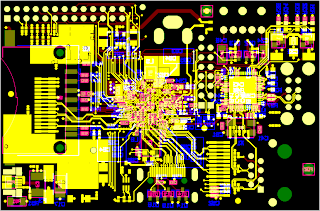Yesterday, we posted a picture of an upcoming Zotac graphics card that was powered by Nvidia’s upcoming GeForce GTX 560 Ti 448 Cores core and now a new image of a video card based on the same unreleased GPU made its appearance, this time manufactured by Asus.
The card is actually called the Asus ENGTX560 TI 448 DCII/2DIS/1280MD5 and was spotted by Fudzilla, who also provided the pictures accompanying this article.
Just as its naming implies, the graphics card is built on Asus’ in-house developed DirectCU II design which uses direct contact heatpipes together with large heatsinks and fans to deliver better thermal and acoustic performance than Nvidia's reference solutions.
At the same time, the high quality components installed on the DirectCu II models also improve the overclocking headroom of the solutions using them, making them highly popular among enthusiast PC users.
This time however, Asus has decided not to increase the operating clocks of its creation over those recommended by Nvidia for the GTX 560 Ti 448 Cores, which means that the GPU and memory runt at 732MHz and 950MHz (3.80GHz effective), respectively.
The GeForce GTX 560 Ti 448 Cores is based on the same GF110 GPU as the GTX 580 and GTX 570, but has one of its 15 streaming modules disabled.
The rest of the graphics core includes 56 texture units, 40 ROP units and a 320-bit memory bus connected to 1.25GB of video buffer, just as is the case with the GeForce GTX 570.
Other features of the Nvidia GTX 560 Ti (448 Core) include support for 3-way SLI, DVI, HDMI and DisplayPort video outputs.
This new GPU is expected to be launched by Nvidia on November 29 and from a performance standpoint should be almost as fast as the GTX 570.



 11/25/2011 11:26:00 PM
11/25/2011 11:26:00 PM
 dannzfay
dannzfay

































